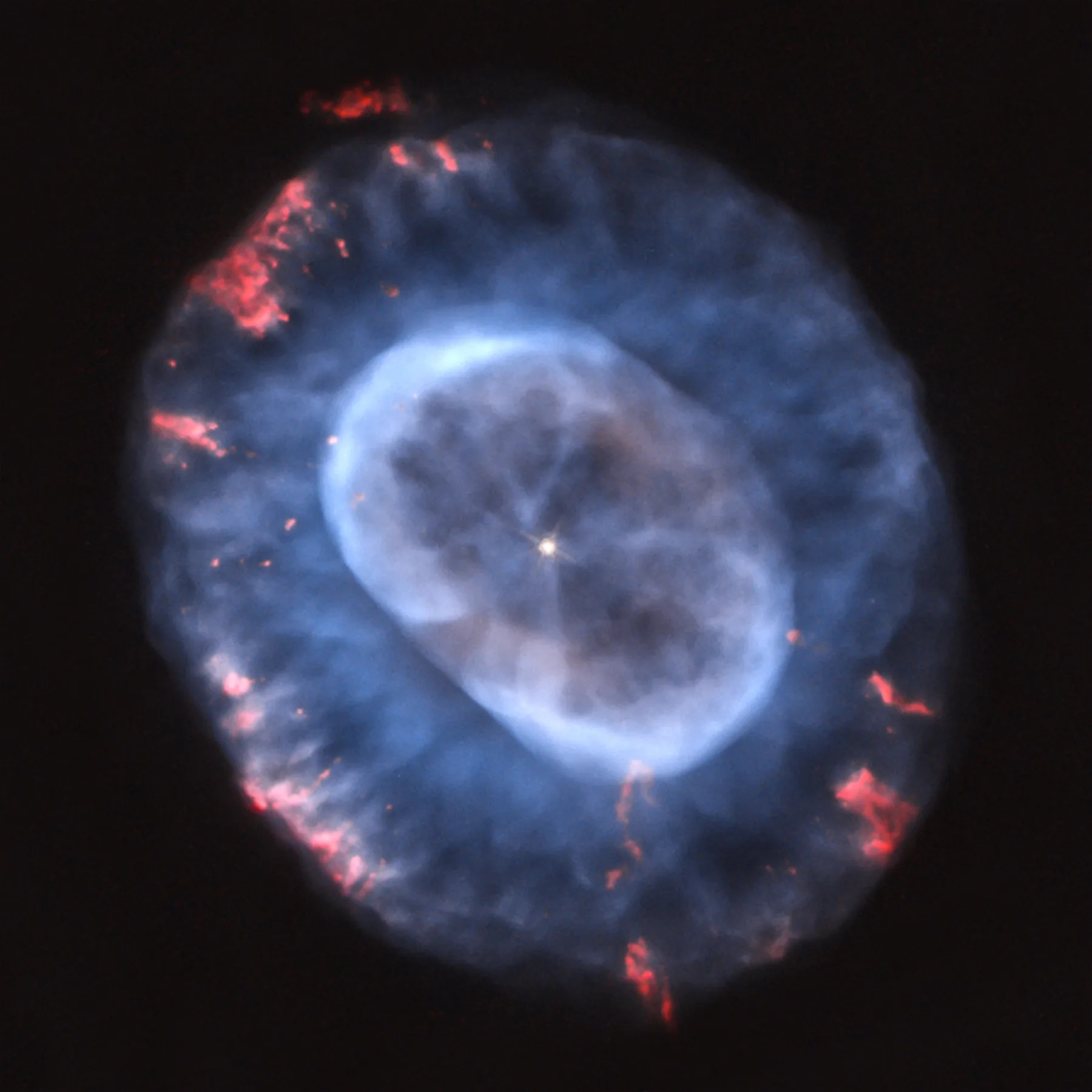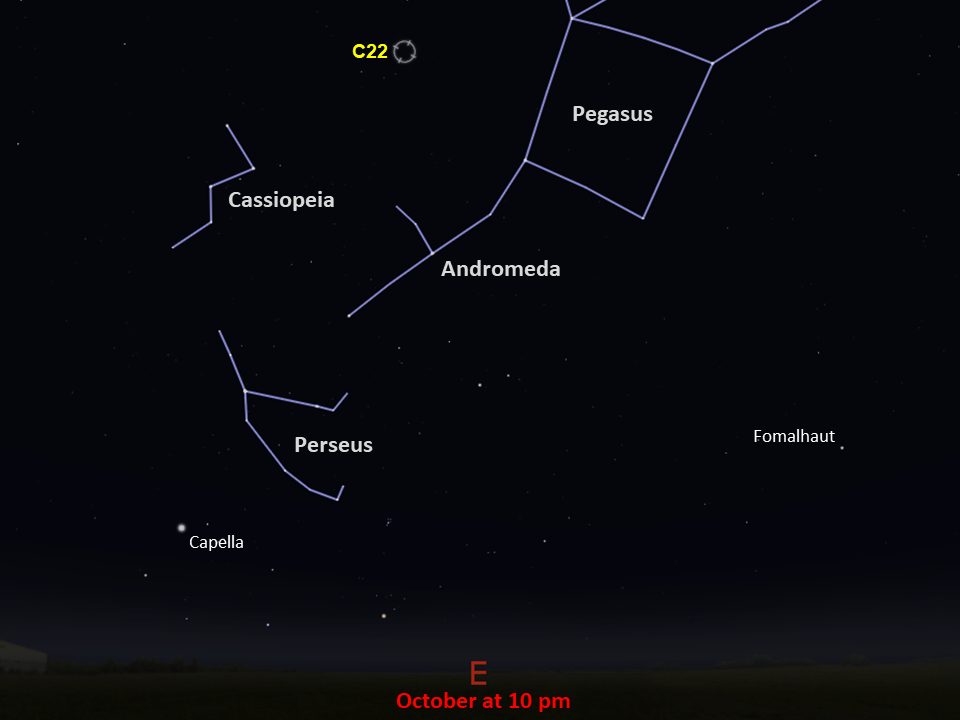Caldwell 22
Also known as NGC 7662, Caldwell 22 is nicknamed the Snowball Nebula or Blue Snowball Nebula.
Distance
2,500 light-years
Apparent Magnitude
8.3
constellation
Andromeda
object type
Planetary Nebula

Caldwell 22 (C22), also cataloged as NGC 7662 and nicknamed the Snowball Nebula or Blue Snowball Nebula, is a planetary nebula located about 2,500 light-years from Earth. Nebulae like these represent a stage in evolution that stars like our Sun undergo when they run out of fuel. Stars are nuclear furnaces that spend most of their lives fusing hydrogen into helium. Massive stars have fiery fates, exploding as supernovae, but medium-mass stars like the Sun swell to become red giants as they exhaust their fuel.
The process begins when, after billions of years of nuclear fusion, the star starts to shut down. Gravity (no longer balanced by the outward pressure created by nuclear fusion) compresses the stellar core. The star’s outer layers of gas puff away into space, creating a planetary nebula (so named because these objects often resemble planetary orbs when viewed through a small telescope). At the center lie the remains of the original star’s compressed core, a small white dwarf. One day the Sun will meet a similar fate, but it has enough fuel to last another 6 billion years or so.
C22 was discovered by astronomer William Herschel in 1784. It is located in the constellation Andromeda and has a magnitude of 8.3. The nebula is well placed for observing in autumn night skies from the Northern Hemisphere. In the Southern Hemisphere, look for it low in northern skies in the spring. The nebula can be viewed in telescopes of all sizes, but it might be mistaken for a star at low magnification. Higher magnifications will better distinguish the nebula. A medium-sized telescope shows C22 well, but the nebula’s central star will remain hidden from all but the largest telescopes.
For more information about Hubble’s observations of Caldwell 22, see:
NGC 7662
A Planetary Nebula Gallery


Glossary
Magnitude - The brightness of an astronomical object, represented by a number; bright objects have low numbers on the magnitude scale, while dim objects have high numbers.
Nebula - An interstellar cloud of dust and gas; either a location where new stars are being forged or a cloud of material ejected into space by a dying star.
Planetary Nebula - An expanding shell of gas around an aging or dying Sun-like star, cast off by the star.
Supernova - The explosion of a massive star at the end its life, which ejects material into space and causes the star to temporarily brighten in our sky.
White Dwarf - The core of a dead Sun-like star whose outer layers have been expelled into space.
Explore Hubble's Caldwell Catalog
The following pages contain some of Hubble’s best images of Caldwell objects.

Caldwell 1
Also known as NGC 188, this group of stars formed from a large cloud of gas making the stars roughly…

Caldwell 2
This shell of gas is expanding outward, away from the dying star within.

Caldwell 3
This barred spiral galaxy was first spotted by British astronomer William Herschel in April 1793 in the constellation Draco.




